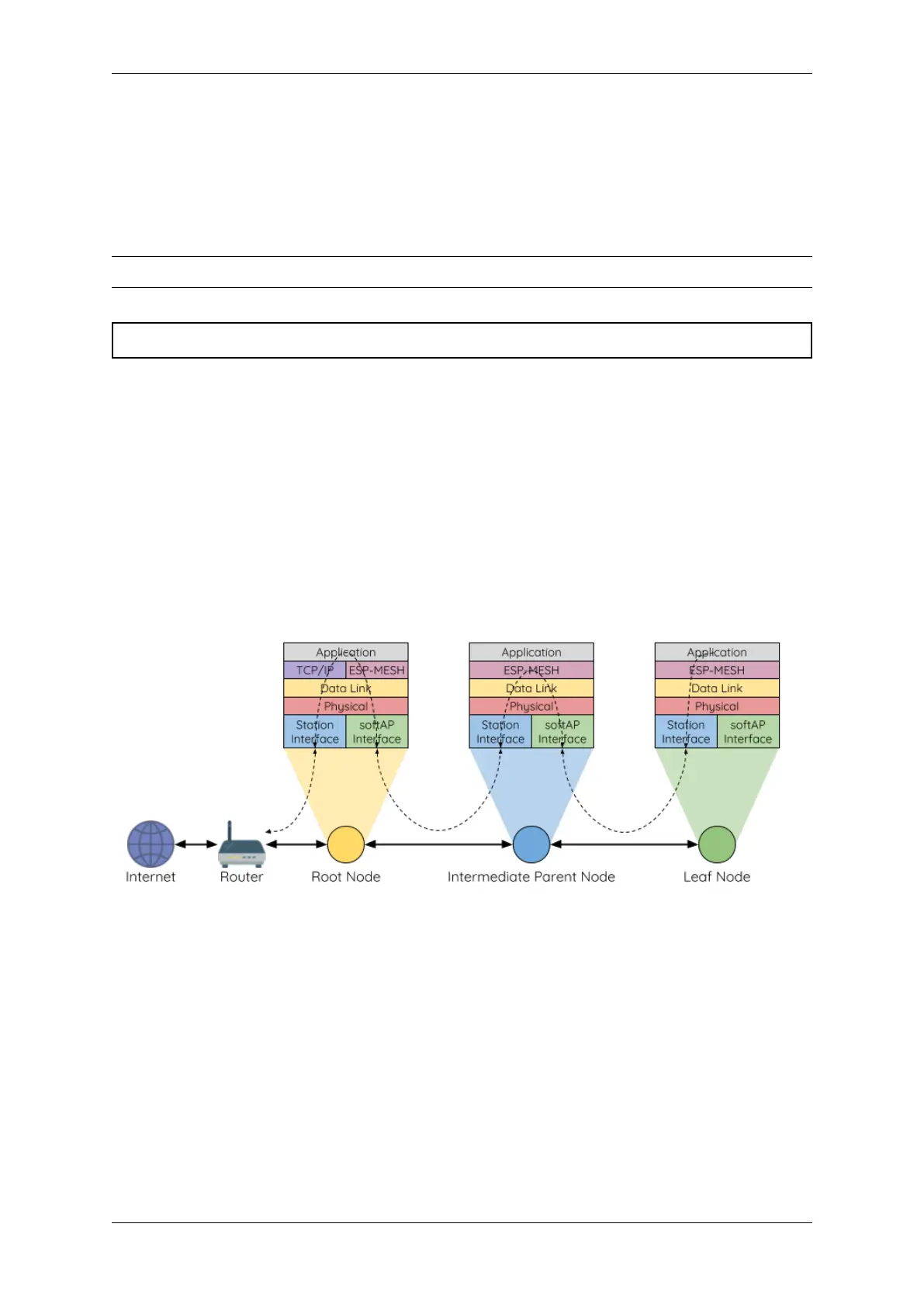Chapter 4. API Guides
2. The parent node receives the window request and compares the sequence number with the sequence number of the
previous packet sent by the child node. The comparison is used to calculate the size of the receiving window which
is transmitted back to the child node.
3. The child node transmits the data packet in accordance with the window size specified by the parent node. If the
child node depletes its receiving window, it must obtain another receiving windows by sending a request before it is
permitted to continue transmitting.
Note: ESP-WIFI-MESH does not support any downstream flow control.
Warning: Due to Parent Node Switching, packet loss may occur during upstream transmissions.
Due to the fact that the root node acts as the sole interface to an external IP network, it is critical that downstream
nodes are aware of the root node’s connection status with the external IP network. Failing to do so can lead to
nodes attempting to pass data upstream to the root node whilst it is disconnected from the IP network. This results
in unnecessary transmissions and packet loss. ESP-WIFI-MESH address this issue by providing a mechanism to
stabilize the throughput of outgoing data based on the connection status between the root node and the external
IP network. The root node can broadcast its external IP network connection status to all other nodes by calling
esp_mesh_post_toDS_state().
Bi-Directional Data Stream
The following diagram illustrates the various network layers involved in an ESP-WIFI-MESH Bidirectional Data
Stream.
Fig. 18: ESP-WIFI-MESH Bidirectional Data Stream
Due to the use of Routing Tables, ESP-WIFI-MESH is able to handle pack forwarding entirely on the mesh
layer. A TCP/IP layer is only required on the root node when it transmits/receives a packet to/from an external IP
network.
4.8.7 Channel Switching
Background
In traditional Wi-Fi networks, channels are predetermined frequency ranges. In an infrastructure basic service set
(BSS), the serving AP and its connected stations must be on the same operating channels (1 to 14) in which beacons
are transmitted. Physically adjacent BSS (Basic Service Sets) operating on the same channel can lead to interference
and degraded performance.
Espressif Systems 1323
Submit Document Feedback
Release v4.4

